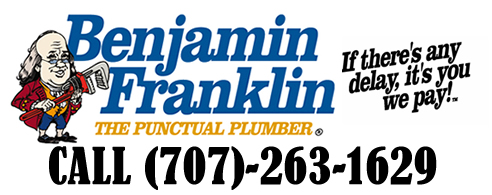Plumbing emergencies can strike at the most inconvenient times, and when they do, it’s essential to act quickly to prevent further damage to your home. While the immediate solution for a plumbing problem often requires the expertise of a professional plumber, there are steps you can take to mitigate the situation and protect your property until the plumber arrives. In this blog post, we’ll provide advice on how to handle common plumbing emergencies and prevent further damage.
1. Shut Off the Water Supply:
The first and most crucial step in any plumbing emergency is to turn off the water supply. Locate the main water shut-off valve for your home. This valve is typically located near where the water line enters your house. It’s essential to familiarize yourself with its location ahead of time so that you can act quickly during an emergency.
- Leaking or Burst Pipes: If you have a leaking or burst pipe, turning off the main water supply will stop the flow of water and prevent further damage. After shutting off the water, open a faucet to relieve any remaining pressure in the pipes.
- Overflowing Toilet: If your toilet is overflowing and you can’t stop it by simply lifting the flapper in the tank, turn off the water supply behind or beneath the toilet. This will prevent more water from entering the bowl.
- Leaking or Burst Water Heater: If your water heater is leaking, turn off the power supply (for electric heaters) or the gas supply (for gas heaters) and then turn off the water supply to the heater.
2. Relieve Pressure:
After shutting off the water supply, it’s crucial to relieve any built-up pressure in the plumbing system to prevent further damage.
- Open Faucets: Open faucets throughout your home to allow any remaining water in the pipes to drain. This can prevent additional leakage or damage in the affected area.
3. Address Minor Leaks:
For minor leaks that are not causing significant damage and are within your ability to handle, you can attempt temporary solutions until the plumber arrives.
- Leaking Joints: If a pipe joint is leaking, you can try using plumber’s tape or a pipe clamp to stop or slow the leak temporarily. These are temporary fixes and should not be relied upon for long-term solutions.
4. Avoid Using Fixtures:
Until the plumbing emergency is resolved, it’s best to avoid using the affected fixtures. Continued use can exacerbate the issue and make repairs more complicated. For example, if a toilet is overflowing, refrain from flushing it until the problem is fixed.
5. Assess the Situation:
While waiting for the plumber, try to assess the situation and provide them with as much information as possible when they arrive. This can help them diagnose and resolve the problem more efficiently.
- Document the Issue: Take photos or notes about the area where the problem occurred, the source of the leak, and any other details that could be helpful to the plumber.
- Be Prepared to Describe the Problem: When the plumber arrives, be ready to describe the problem and any actions you’ve taken to address it. This information can assist the plumber in determining the cause of the issue.
6. Have Emergency Contacts:
In any plumbing emergency, it’s essential to have the contact information for a trusted, licensed plumber readily available. If you don’t already have a preferred plumber, it’s a good idea to research and establish a relationship with one before emergencies occur.
7. Know Your Limits:
While some minor plumbing issues can be handled by homeowners, it’s crucial to recognize your limits. Attempting complex repairs without the necessary skills can worsen the situation. In such cases, it’s best to leave the work to a professional plumber.
Conclusion: Act Quickly and Safely
Plumbing emergencies can be stressful, but by acting quickly and safely, you can prevent further damage to your home while awaiting the arrival of a professional plumber. Remember to turn off the water supply, relieve pressure, and, when possible, address minor leaks. Additionally, be prepared with the contact information of a trusted plumber in case of future emergencies. By following these steps, you can minimize the impact of a plumbing emergency and protect your property.
Remember, a reliable plumber is just a call away! Contact us today at (800) 259-7705!





